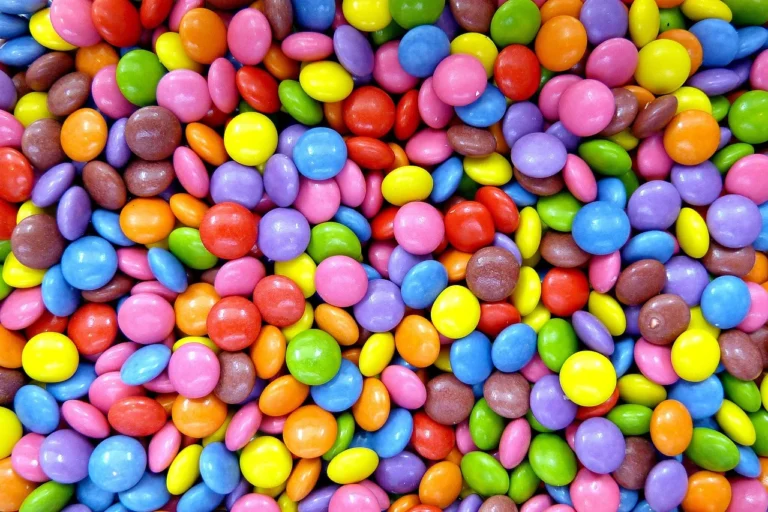Skittles have long been a favorite candy for many, providing a burst of fruit-flavored sweetness. But with freeze-dried candy gaining popularity, candy enthusiasts are curious: how do the carbs in a freeze-dried Skittle compare to those in a regular Skittle? Here, we’ll explore the nutritional differences between these two versions of the same treat, focusing on carbs in a freeze dried skittle vs regular, taste, and health impacts. Whether you’re watching your carb intake or just curious about how freeze-dried candy differs from the traditional kind, we’ve got you covered.
What Are Freeze-Dried Skittles?
Before diving into the carb comparison, let’s first clarify what freeze-dried Skittles are. Freeze-drying is a method that eliminates moisture from food while preserving its texture and flavor. When Skittles are freeze-dried, they puff up and become crunchy, offering a different texture from the chewy original. Despite the texture change, the essence of a Skittle remains the same—delivering that fruity flavor punch.
Why Do People Freeze-Dry Skittles?
Freeze-dried candies have gained a cult following because of their unique crunch and the way freeze-drying amplifies their flavor. But aside from texture and taste, the primary components, including sugar and carbs, remain largely unchanged.
How Carbohydrates Work in Candy?
To better understand the carb content in both regular and freeze-dried Skittles, it’s essential to know what carbohydrates do. Carbs, which include sugars, starches, and fibers, are a source of energy for the body. In candies like Skittles, the majority of the carbs come from simple sugars, which are quickly digested and can cause a spike in blood sugar levels.
Types of Carbohydrates
- Simple Carbs – These are sugars found naturally in fruits and milk, but they are also added to foods like candies. They digest quickly and can give a quick boost of energy.
- Complex Carbs – These take longer to break down and are found in foods like whole grains and vegetables.
Regular Skittles
A standard serving of regular Skittles (about 1 oz or 28 grams) contains roughly 34 grams of carbohydrates. Of this amount, approximately 30 grams are derived from sugar. Skittles are known for being a high-sugar, high-carb candy, which is why they offer that sweet rush of energy when you eat them.
Breaking Down the Numbers
- Total Carbs: 34 grams
- Sugars: 30 grams
- Dietary Fiber: Less than 1 gram
The majority of the carbs in regular Skittles come from added sugars, which provide quick energy but little nutritional value.
Freeze-Dried Skittles
Here’s where things get interesting. When Skittles are freeze-dried, the process removes water but leaves the sugar and carbs intact. As a result, the carb content remains nearly identical to that of regular Skittles. However, since the freeze-drying process reduces the weight of the candy by removing moisture, a serving of freeze-dried Skittles may appear smaller but still contains the same carb content.
Nutritional Comparison: Regular vs. Freeze-Dried Skittles
Let’s break down the key nutritional differences between these two types of Skittles:
| Nutrient | Regular Skittles (1 oz) | Freeze-Dried Skittles (1 oz) |
| Carbohydrates | 34 grams | 34 grams |
| Sugars | 30 grams | 30 grams |
| Dietary Fiber | Less than 1 gram | Less than 1 gram |
| Calories | 160 calories | 160 calories |
| Fat | 1.5 grams | 1.5 grams |
Health Considerations for Carbs in Skittles
Now that we know the carb content is the same, what does this mean for those monitoring their carbohydrate intake? Whether you’re indulging in regular or freeze-dried Skittles, it’s essential to remember that they are a high-sugar snack. This can be a concern for those watching their blood sugar levels or those following a low-carb diet.
Impact of High Sugar on Health
Skittles, freeze-dried or not, contain high levels of simple sugars. Frequent consumption of sugary snacks can result in:
- Spikes in Blood Sugar: This can cause energy crashes shortly after consumption.
- Weight Gain: Sugary snacks are calorie-dense and provide little satiety, leading to overeating.
- Risk of Tooth Decay: Sugary foods like Skittles can contribute to cavities.
Skittles and a Balanced Diet
Candy, including Skittles, should be enjoyed as an occasional treat, not a regular part of your diet. Both regular and freeze-dried Skittles are high in carbs and sugars but offer little in the way of nutritional value. If you’re craving something sweet, consider balancing it with other foods that provide fiber, protein, and healthy fats.
Tips for Enjoying Skittles in Moderation
- Portion Control: Stick to a single serving to keep your carb intake in check.
- Pair with Protein or Fiber: Eating a protein or fiber-rich snack alongside your Skittles can help stabilize blood sugar levels.
- Opt for Smaller Packs: Miniature or fun-sized packs can help control portions.
Conclusion
In conclusion, freeze-dried Skittles are not lower in carbs than regular Skittles. Both types contain the same amount of carbohydrates and sugars per serving. The primary difference between the two is texture, with freeze-dried Skittles offering a crunchier, more intense flavor. However, from a nutritional standpoint, there is no advantage to choosing one over the other. Whether you’re reaching for a carbs in a freeze dried skittle vs regular, it’s important to enjoy them in moderation, especially if you’re watching your carb or sugar intake.
